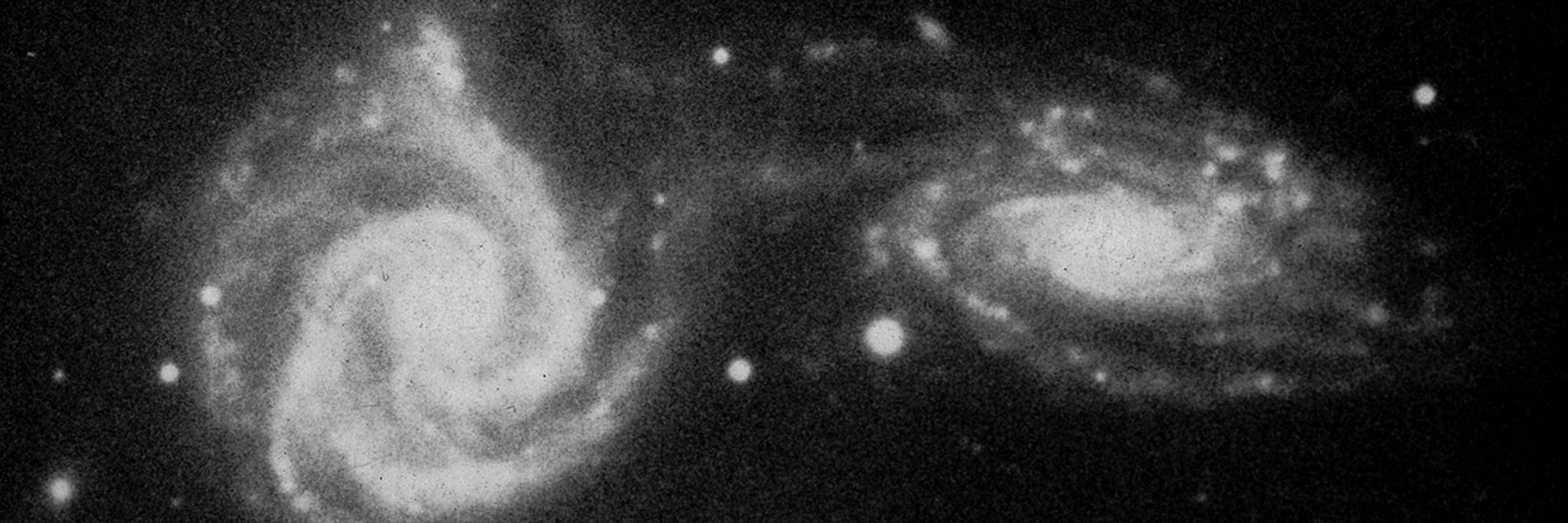
Automated account. Image curation, descriptions, typos, and most alt text by astronomer @kellylepo.bsky.social.
See posts for credits and links to the original sources.
NGC 4088 is an asymmetric spiral galaxy, located about 40 million light years away.
Credit: KPNO, NOIRLab, NSF, AURA, Bonnie Fisher, Mike Shade, Adam Block
Source

NGC 4088 is an asymmetric spiral galaxy, located about 40 million light years away.
Credit: KPNO, NOIRLab, NSF, AURA, Bonnie Fisher, Mike Shade, Adam Block
Source
In the original catalog it was in the category: Double and multiple galaxies - Unclassified objects.
Source

In the original catalog it was in the category: Double and multiple galaxies - Unclassified objects.
Source
In the original catalog it was in the category: Spiral galaxies - Small, high surface brightness companions.
Source

In the original catalog it was in the category: Spiral galaxies - Small, high surface brightness companions.
Source
This image was taken in 1975 image with the 4-meter Mayall telescope.
Credit: NOIRLab, NSF, AURA
Source

This image was taken in 1975 image with the 4-meter Mayall telescope.
Credit: NOIRLab, NSF, AURA
Source
The large spiral galaxy, NGC 3227 is interacting with its elliptical galaxy companion, NGC 3226. Faint tidal streams of gas and dust link the pair.
Credit: NASA, ESA, and H. Ford, G. Kober
Source
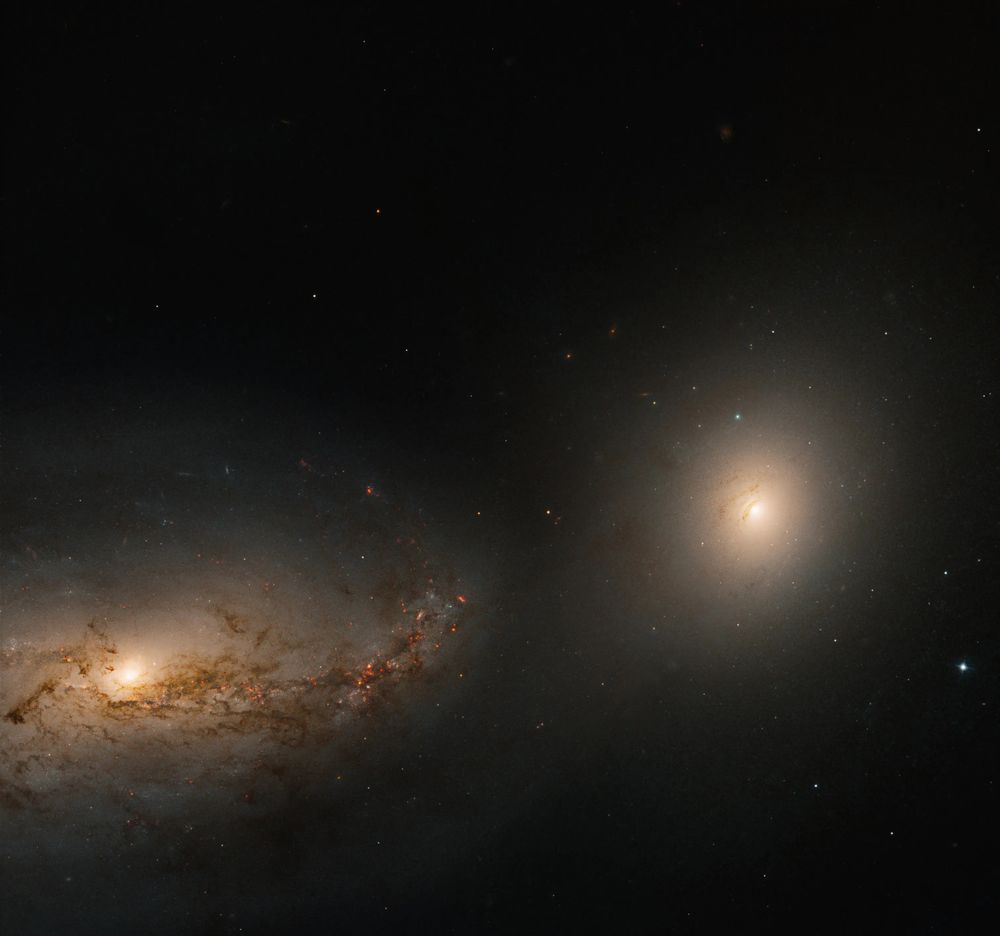
The large spiral galaxy, NGC 3227 is interacting with its elliptical galaxy companion, NGC 3226. Faint tidal streams of gas and dust link the pair.
Credit: NASA, ESA, and H. Ford, G. Kober
Source
The mutual gravitational interaction of this pair of spiral galaxies distorts their shapes and creates a bridge of gas, dust and young stars that connect the galaxies.
Credit: GTC, IAC
Source

The mutual gravitational interaction of this pair of spiral galaxies distorts their shapes and creates a bridge of gas, dust and young stars that connect the galaxies.
Credit: GTC, IAC
Source
The galaxy's irregular arms is likely due to gravitational interactions with a neighboring galaxy.
Credit: Dark Energy Survey, DOE, FNAL, DECam, CTIO, NOIRLab, NSF, AURA, R. Colombari, M. Zamani
Source

The galaxy's irregular arms is likely due to gravitational interactions with a neighboring galaxy.
Credit: Dark Energy Survey, DOE, FNAL, DECam, CTIO, NOIRLab, NSF, AURA, R. Colombari, M. Zamani
Source
Interactions between the two galaxies create delicate streams that visibly link the pair.
Credit: NASA, ESA, STScI, J. Dalcanton, Judy Schmidt, Legacy Surveys, D. Lang, NERSC
Source
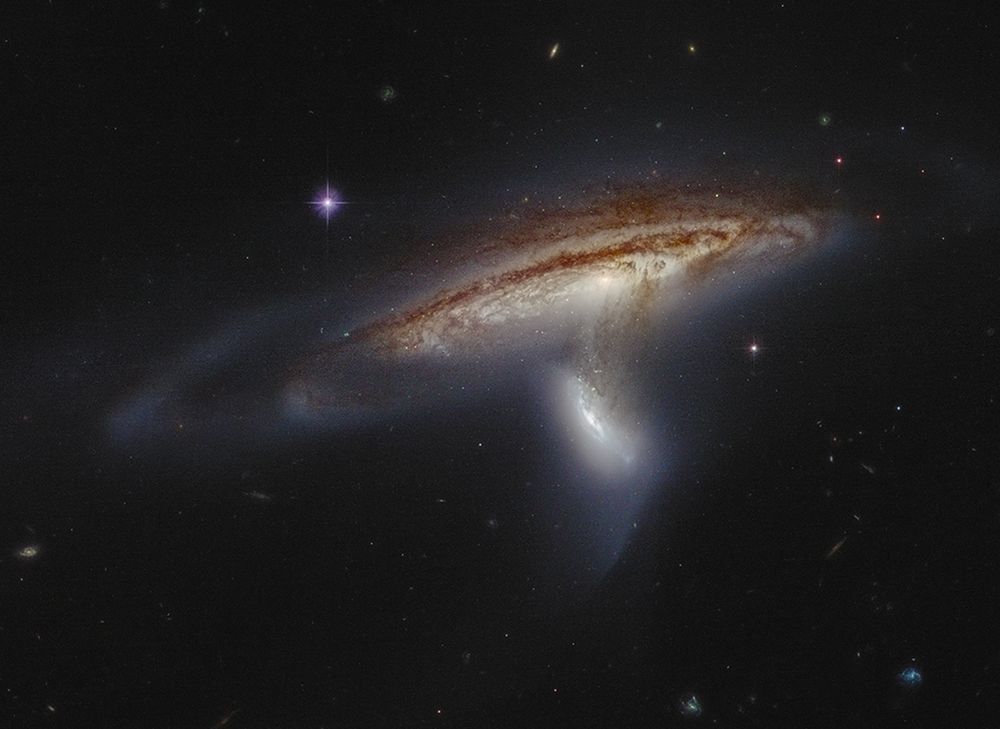
Interactions between the two galaxies create delicate streams that visibly link the pair.
Credit: NASA, ESA, STScI, J. Dalcanton, Judy Schmidt, Legacy Surveys, D. Lang, NERSC
Source
NGC 497 is a barred spiral galaxy about 370 million light years away in the constellation Cetus.
Credit: SDSS
Source
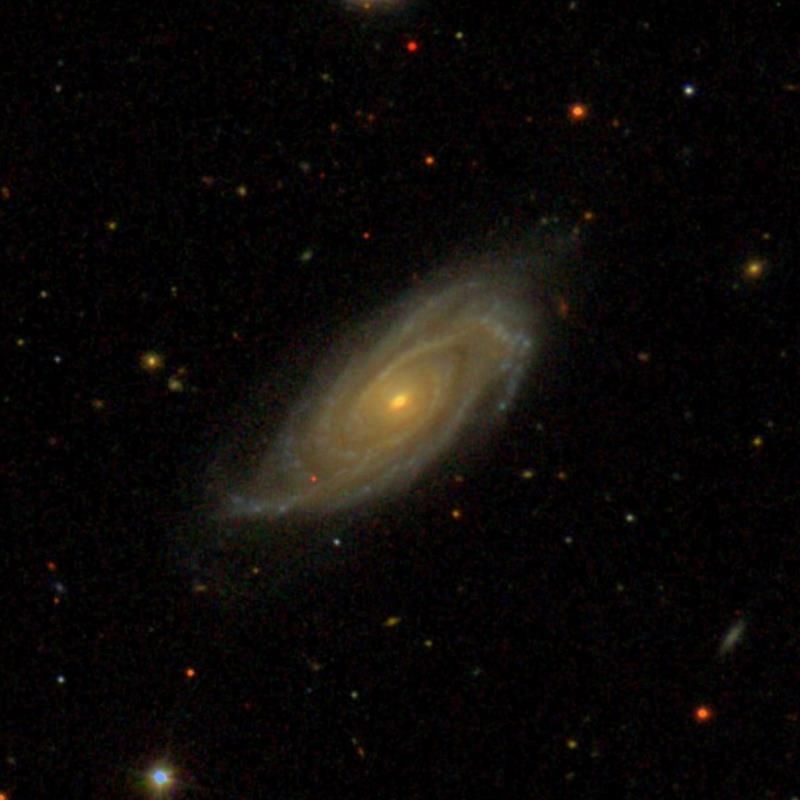
NGC 497 is a barred spiral galaxy about 370 million light years away in the constellation Cetus.
Credit: SDSS
Source
Arp thought this was one galaxy with a particularly beefy arm. Later images show this is actually a pair of galaxies, one face-on and one nearly edge-on.
Credit: KPNO, NOIRLab, NSF, AURA, Friends' Central School, A. Block
Source

Arp thought this was one galaxy with a particularly beefy arm. Later images show this is actually a pair of galaxies, one face-on and one nearly edge-on.
Credit: KPNO, NOIRLab, NSF, AURA, Friends' Central School, A. Block
Source
In the original catalog it was in the category: Spiral galaxies - Small, high surface brightness companions. The large galaxy interacts with its companion.
Source

In the original catalog it was in the category: Spiral galaxies - Small, high surface brightness companions. The large galaxy interacts with its companion.
Source
In the original catalog it was in the category: Elliptical galaxies - Connected to spiral galaxies. Interactions led to the spiral's odd shape.
Source

In the original catalog it was in the category: Elliptical galaxies - Connected to spiral galaxies. Interactions led to the spiral's odd shape.
Source
NGC 7393 is a barred spiral galaxy in the constellation Aquarius.
Credit: NASA, ESA, STScI, Julianne Dalcanton, Meli thev, Wikimedia Commons
Source
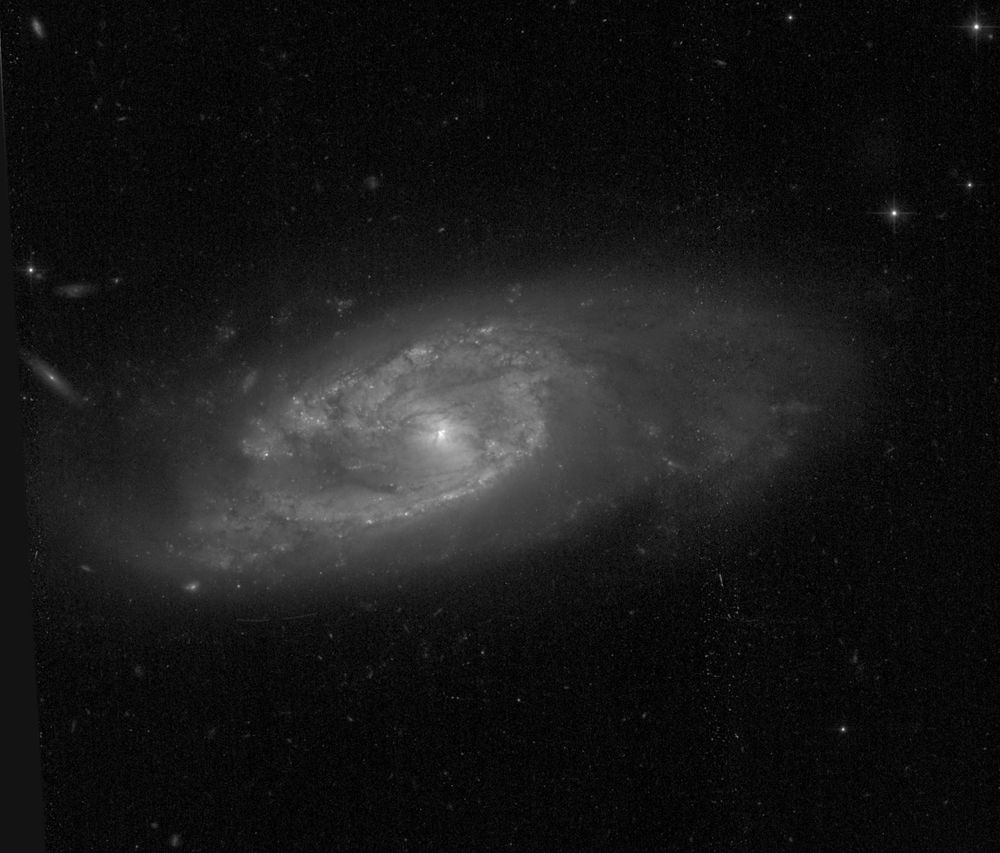
NGC 7393 is a barred spiral galaxy in the constellation Aquarius.
Credit: NASA, ESA, STScI, Julianne Dalcanton, Meli thev, Wikimedia Commons
Source
This glittering image was taken with the MUSE instrument on ESO’s Very Large Telescope.
It highlights the galaxy's warm gas, hydrogen (red), oxygen (blue), and sulfur (orange).
Credit: ESO, PHANGS
Source

This glittering image was taken with the MUSE instrument on ESO’s Very Large Telescope.
It highlights the galaxy's warm gas, hydrogen (red), oxygen (blue), and sulfur (orange).
Credit: ESO, PHANGS
Source
A galaxy likely collided with Arp 10 near its center. A density wave rippled outwards, creating a ring of new stars in the freshly compacted gas.
Credit: Legacy Surveys, D. Lang, NERSC, Meli thev, Wikimedia Commons
Source

A galaxy likely collided with Arp 10 near its center. A density wave rippled outwards, creating a ring of new stars in the freshly compacted gas.
Credit: Legacy Surveys, D. Lang, NERSC, Meli thev, Wikimedia Commons
Source
In the NuSTAR image (left panel), a supermassive black hole accretes gas and glows in X-rays. The black hole is in the right galaxy of a pair (see Hubble image, right panel).
Credit: NASA, JPL-Caltech, GSFC
Source

In the NuSTAR image (left panel), a supermassive black hole accretes gas and glows in X-rays. The black hole is in the right galaxy of a pair (see Hubble image, right panel).
Credit: NASA, JPL-Caltech, GSFC
Source
The galaxies in this triplett are gravitationally interacting. NGC 5566 is at center, NGC 5569 at bottom left, and NGC 5560 at top left.
Credit: NOIRLab, NSF, AURA, T.A. Rector, H. Schweiker
Source

The galaxies in this triplett are gravitationally interacting. NGC 5566 is at center, NGC 5569 at bottom left, and NGC 5560 at top left.
Credit: NOIRLab, NSF, AURA, T.A. Rector, H. Schweiker
Source
This interacting galaxy group includes a pair of merging galaxies with two nuclei and trails of blue super star clusters at top and a single large spiral galaxy at bottom.
Credit: NASA, ESA, and the Hubble Heritage Team
Source

This interacting galaxy group includes a pair of merging galaxies with two nuclei and trails of blue super star clusters at top and a single large spiral galaxy at bottom.
Credit: NASA, ESA, and the Hubble Heritage Team
Source
In the original catalog it was in the category: Spiral galaxies - Split arms. NGC 2608 is a barred spiral galaxy in the constellation Cancer.
Source

In the original catalog it was in the category: Spiral galaxies - Split arms. NGC 2608 is a barred spiral galaxy in the constellation Cancer.
Source
In the original catalog it was in the category: Amorphous galaxies - Narrow filament. NGC 1961 is an extremely massive spiral galaxy with irregular arms.
Source

In the original catalog it was in the category: Amorphous galaxies - Narrow filament. NGC 1961 is an extremely massive spiral galaxy with irregular arms.
Source
A recent encounter between NGC 6621 (right) and NGC 6622 (left) pulled a long tail out of NGC 6621 that wraps behind the galaxy.
Credit: NASA, ESA, STScI
Source

A recent encounter between NGC 6621 (right) and NGC 6622 (left) pulled a long tail out of NGC 6621 that wraps behind the galaxy.
Credit: NASA, ESA, STScI
Source
The lopsided galaxy has a core offset to the upper left and a spiral arm separated from the others. It is interacting with a nearby galaxy, just out of frame.
Credit: NASA, ESA, STScI, P. Sell
Source

The lopsided galaxy has a core offset to the upper left and a spiral arm separated from the others. It is interacting with a nearby galaxy, just out of frame.
Credit: NASA, ESA, STScI, P. Sell
Source
In the original catalog it was in the category: Spiral galaxies - Large, high surface brightness companions. A tidal tail connects the pair.
Source

In the original catalog it was in the category: Spiral galaxies - Large, high surface brightness companions. A tidal tail connects the pair.
Source
The left image is in ultraviolet light. The right image is in visible light.
The upper and lower galaxy pairs are at different distances.
Credit: Fig. 13 from Smith et al. 2010.
Source
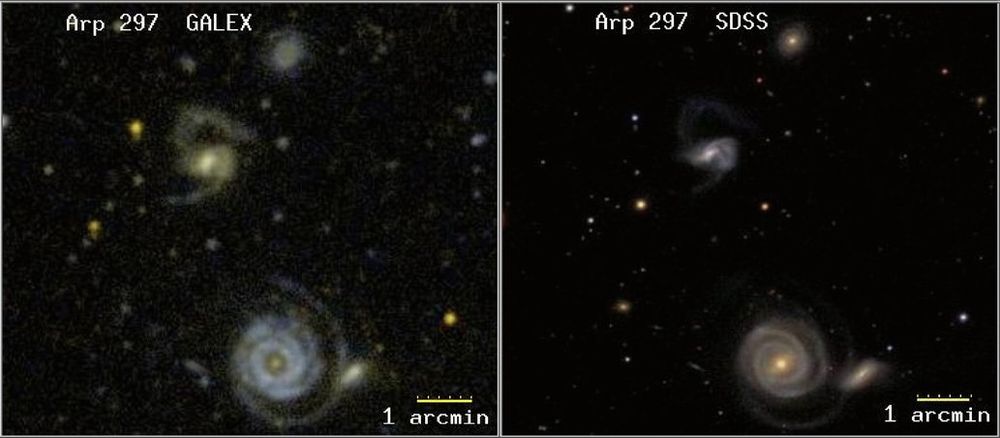
The left image is in ultraviolet light. The right image is in visible light.
The upper and lower galaxy pairs are at different distances.
Credit: Fig. 13 from Smith et al. 2010.
Source
In the original catalog it was in the category: Double and multiple galaxies - Unclassified objects. The pair is beginning to interact.
Source

In the original catalog it was in the category: Double and multiple galaxies - Unclassified objects. The pair is beginning to interact.
Source

